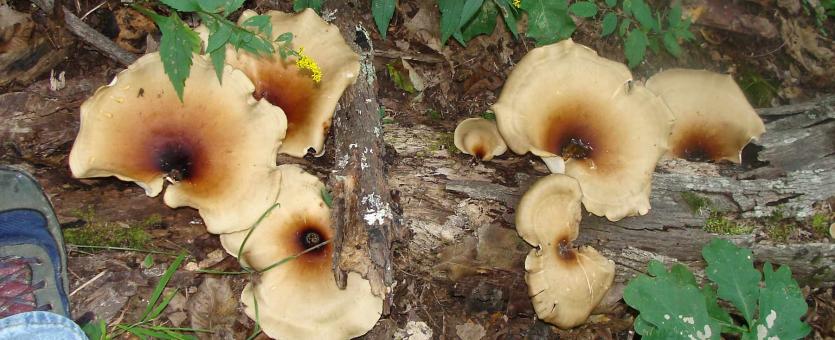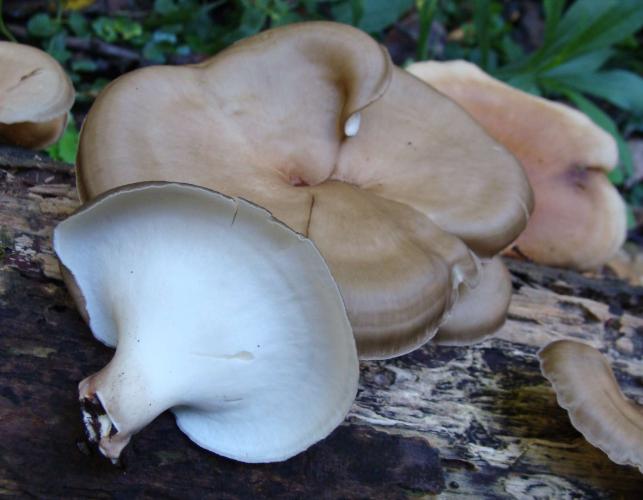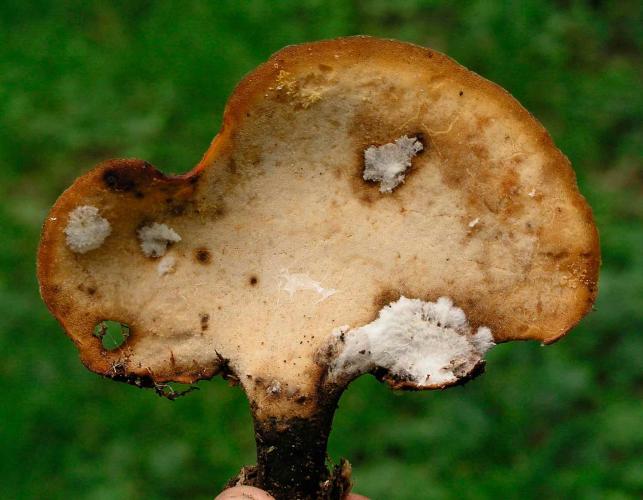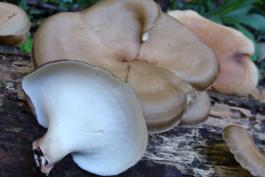
Smooth, wavy brown cap with whitish or tannish pores beneath; black, smooth, off-center stalk. Grows singly or in groups on dead wood and stumps of deciduous trees. August–October, but can overwinter. Cap convex to funnel-shaped; dark reddish to brownish, becoming darker with age; texture dry, smooth, tough, leathery. Pores tiny; circular, sometimes with angles; whitish to tannish. Stalk with equal sides; blackish; texture smooth; off-center; tough. Spore print white. Spores magnified are cylindrical, elliptical, smooth, colorless.
Lookalikes: Rooting polypore (Polyporus radicatus) is fleshier, appears to grow from the ground (but is usually on buried wood), and its stalk continues underground with a thick, rootlike filament.
Cap width: 2–8 inches; stalk length: ½–2½ inches; stalk width: ⅛–⅝ inch.

Statewide.
Habitat and Conservation
Grows singly or in groups of up to several on fallen tree trunks, other dead and decaying wood, and stumps of deciduous trees. Black-footed polypores can overwinter and look quite different from fresh, young specimens.
Status
Not edible. (Inedibly tough.)
Life Cycle
This species lives within rotting logs as a whitish network of cells (mycelium) that digests and decomposes the dead wood. When ready to reproduce, the mycelium develops the mushroom that emerges from the log—this is the reproductive structure. In polypores, spores are produced in the pores on the underside and are released to begin new mycelia elsewhere. The mycelium of a mushroom can live for decades.
Human Connections
Mushrooms decorate nature the way wildflowers do, adding to our pleasure on hikes. Many mushrooms are most prominent in the fall, when wildflowers are winding down. Mushrooms that overwinter are especially delightful to see.
Ecosystem Connections
This is one of the many fungus species that live on decaying wood. It and other such saprobic fungi play an incredibly important role in breaking down the tough materials wood is made of and returning those nutrients to the soil.










Mushrooms are a lot like plants, but they lack chlorophyll and have to take nutrients from other materials. Mushrooms are neither plants nor animals. They are in a different kingdom — the fungi. Fungi include the familiar mushroom-forming species, plus the yeasts, molds, smuts, and rusts.
Always be cautious when eating edible mushrooms. Be absolutely sure of the ID, and only eat a small amount the first time you try it to avoid a reaction..





















